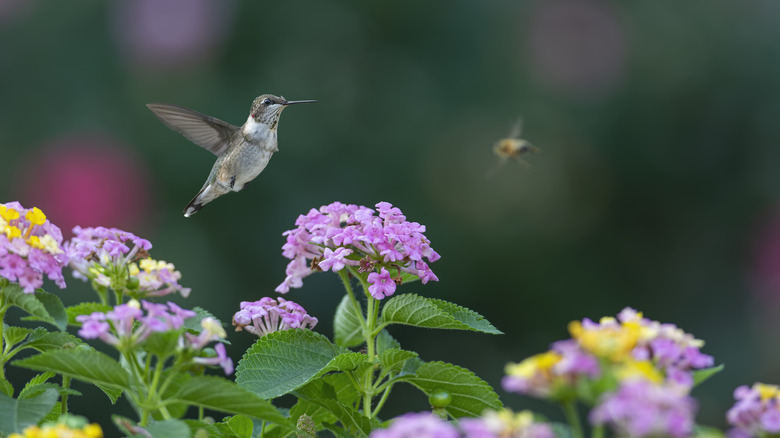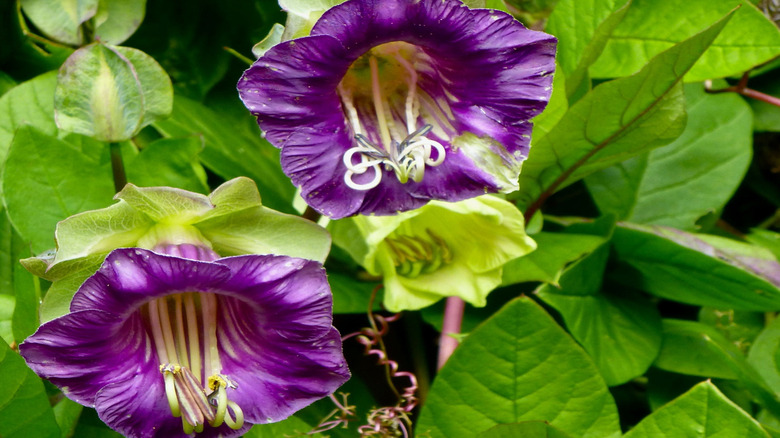Hummingbirds Will Flock To This Vibrant, Fast-Growing Climbing Plant In Your Yard
With over 360 species, hummingbirds are a hot topic for birders, but they are also valuable pollinators that contribute to a healthy ecosystem. If you'd like to see more of these beautiful creatures on your property, there are some essential features for attracting hummingbirds to your garden. For example, did you know hummingbirds will flock to your feeder when you hang it at the right height? What's better than good feeder practices, though, is giving hummingbirds the perfect cup of nectar with an easy-to-grow flowering vine.
The cup and saucer vine (Cobaea scandens) is known by many names, including cathedral bells, coral bells, and monastery bells, because of the cup or bell-shaped flower that it produces. It is a non-invasive, fast-growing plant that hummingbirds love. Plus, the stunning purple flowers are a beautiful addition to any outdoor space. The vine can grow up fences and trellises to create a wall of blooming bells that will turn your outdoor space into a hummer's oasis.
Create a hummingbird haven with the cup and saucer vine
There are countless flowers that will transform your space into a hummingbird haven, and the cup and saucer vine is the perfect climbing plant to tie it all together. This plant grows best in USDA hardiness zones 9 to 11 in moist soil with good drainage. Not only does this plant grow rapidly at up to 20 feet per year, but it is also easy to care for. When it is planted near a trellis in its ideal growing conditions, the vines can climb up to 40 feet in the first year, creating an enchanting cascade of flowers filled with nectar at the perfect height for hummingbirds.
To get started, plant the seeds indoors in winter. They will be ready to transplant in about 6 to 8 weeks, but you will want to make sure the last frost has passed before placing them in the ground. When choosing where to place them, look for an area that will get full sun but also have enough space for a trellis or tall fence for the vines to climb. You don't need to do much with the soil, either. They prefer slightly acidic soil with a pH around 6.0; over-fertilization can yield more leaves instead of flowers, which is less ideal if your goal is to attract hummingbirds. Last but not least, the vines should be pruned seasonally to keep the plant healthy and prevent disease. Be sure to water it lightly and regularly during its growing season to keep the soil slightly damp, taking care to prevent it from becoming too soggy.

